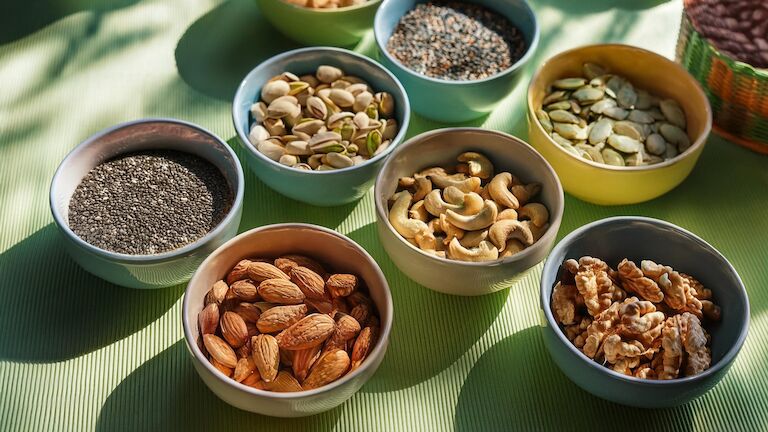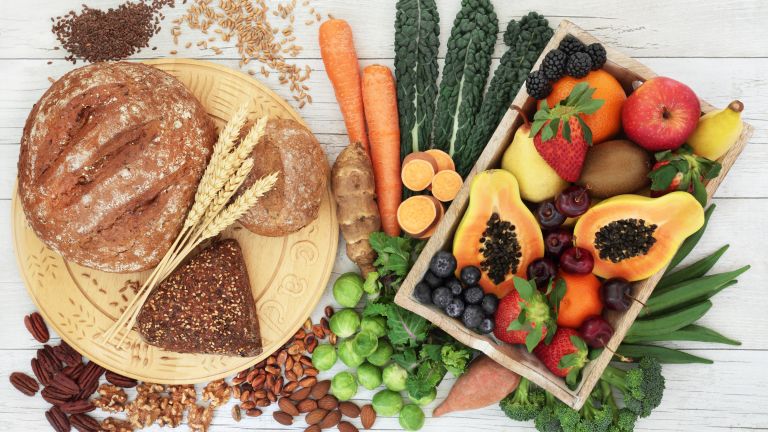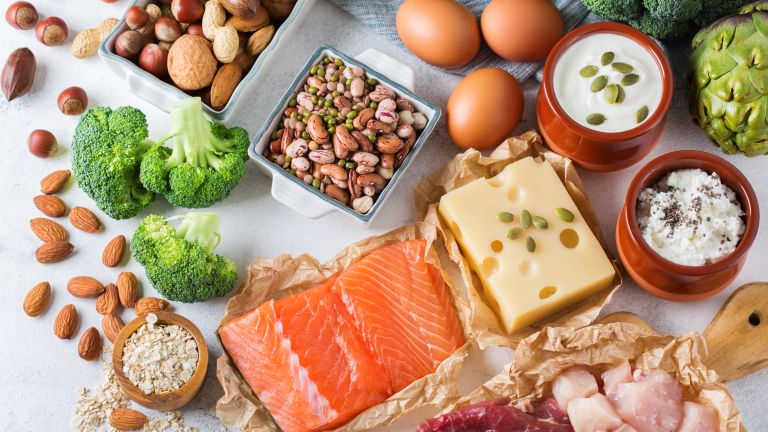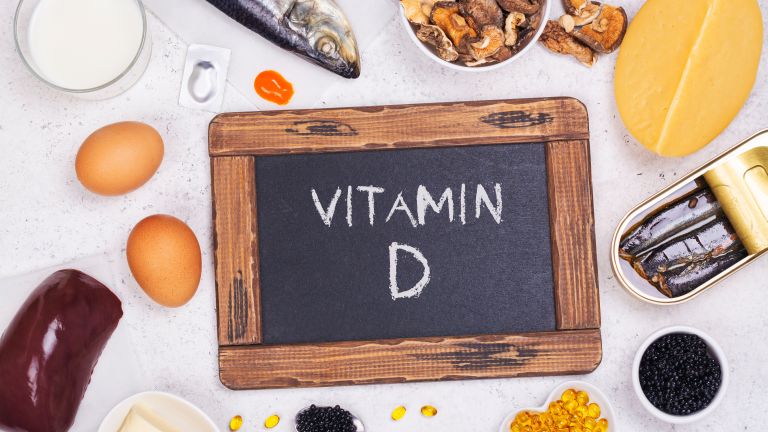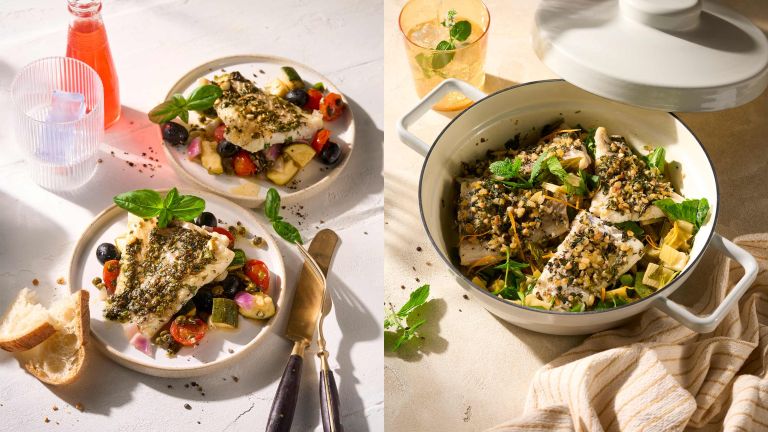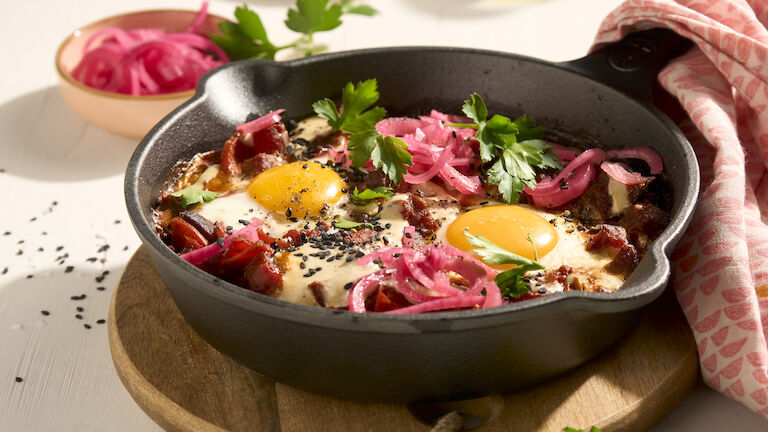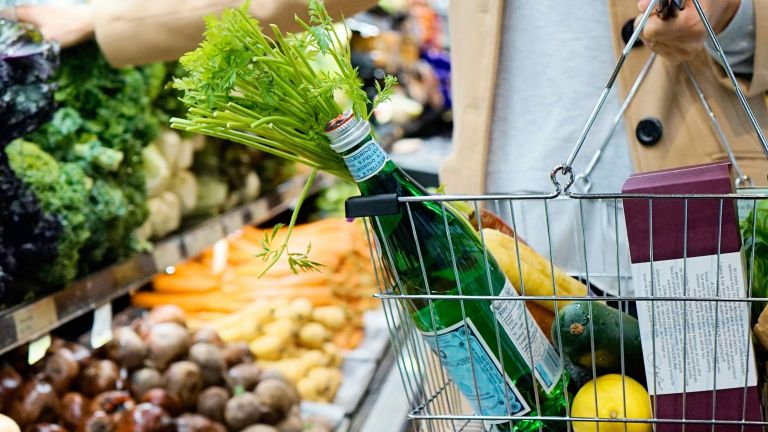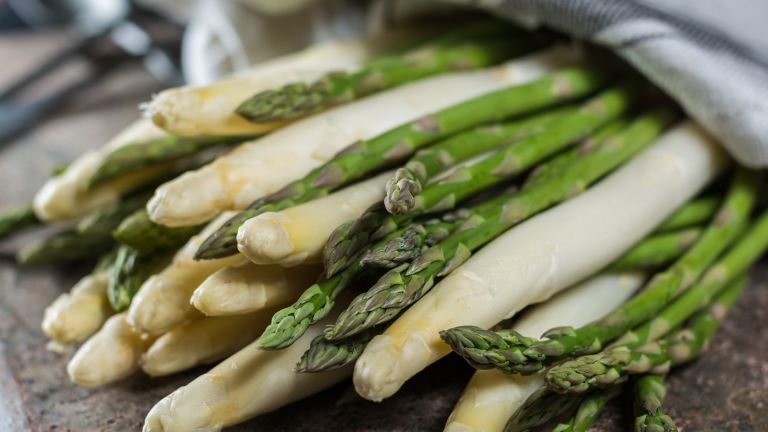Protein: The filling nutrient that has much more to offer
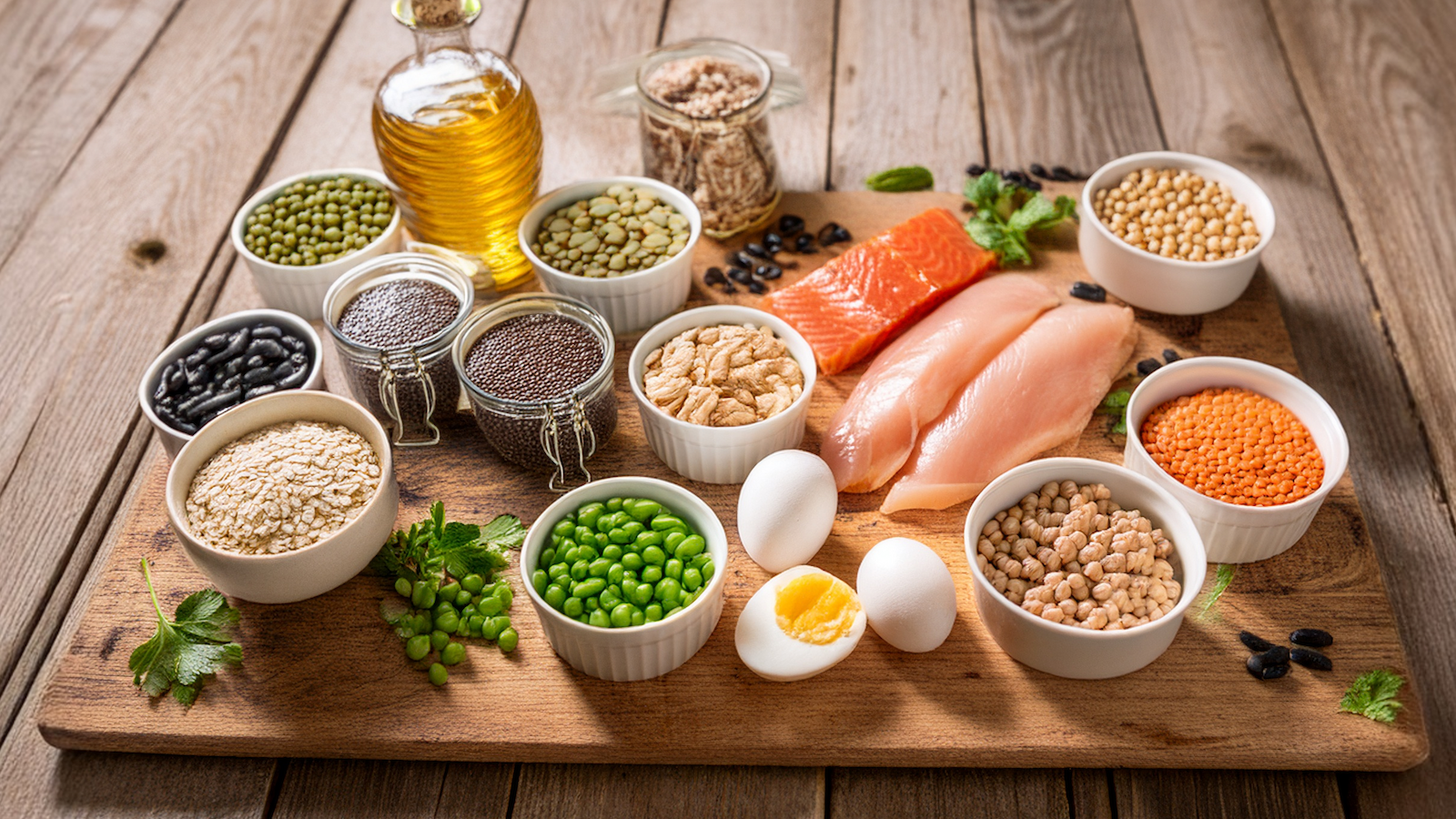
Protein is crucial to a balanced diet. But how much protein do you really need during the various stages of life? What are the best sources of protein and how can you be sure you are getting enough? We answer these questions below and dish up some delicious recipes that will help meet your protein needs.
Why is everyone raving about protein these days? While it is a nutrient that plays a central role in the body (e.g. muscles, brain, hair, etc.) as a messenger and building block, it also has a significant satiating effect according to the protein leverage hypothesis [1] and can influence both our eating habits and our health.
In addition to fats and carbohydrates, proteins are one of the energy-supplying macronutrients that we absorb through our food. The good news is that proteins have a low glycaemic index and keep blood sugar levels stable. Protein-rich foods therefore keep us full for longer. Protein leverage research has repeatedly found that when consuming low-protein foods we tend to eat more, thereby absorbing more fat and carbohydrates. Consequently, only the quantity of protein dictates when we are full.
How much protein do we really need?
The amount of protein required by each individual can vary depending on age, gender, activity level, and personal health goals. Nutritionists, such as those from the German Nutrition Society (DGE), generally recommend a daily protein intake of about 0.8 g per kilogram of body weight, which equates to roughly 56 g of protein per day for someone who weighs 70 kilograms. This amount can be higher for athletes, pregnant women and the elderly, as their need for amino acids and tissue recovery is often increased. Up to 1.5 to 2 g per kilogram of body weight can be consumed in such cases. [2]
How much protein can we digest from one meal?
Myths abound about the quantity of protein that can be absorbed by the body in one sitting. In the past, experts mostly agreed that the body can effectively process about 20 to 40 g of protein per meal. Thanks to recent studies³, we now know that the body can also absorb 100 g or more at once, depending on height and body weight.
This largely depends on the protein source, however. Proteins such as whey protein (especially in protein shakes) are very quickly absorbed by the body. Others (casein protein – especially in quark) are digested much more slowly. Depending on your protein requirements, you should aim for between 20 and 100 g per meal.
Why is protein important as we grow older?
After the age of 30 to 40 years, muscle mass naturally decreases – a process known as sarcopenia. An increased intake of protein can counteract this muscle breakdown and help maintain muscle strength. Proteins also help to keep the bones healthy and reduce the risk of fractures. The elderly in particular should try to increase their daily protein intake in order to improve physical function and quality of life.
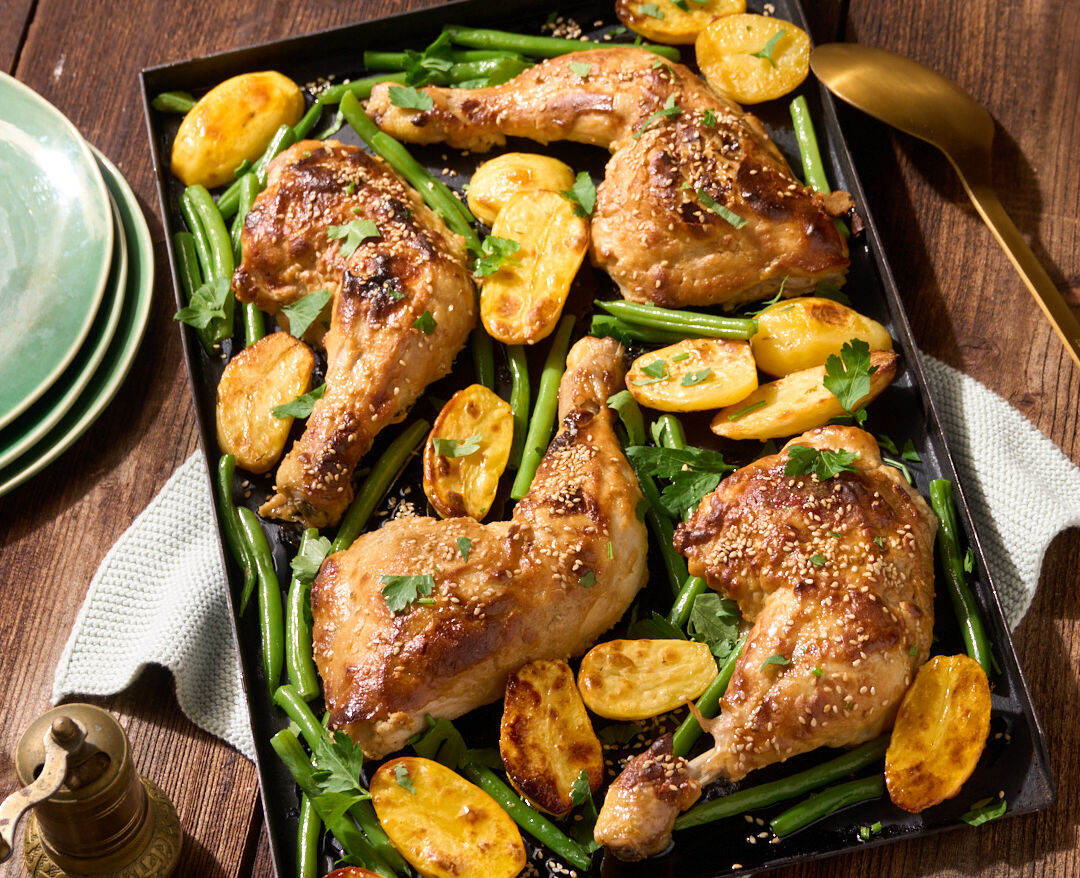
Where can protein be found?
Protein is found in many foods and can be roughly divided into animal and plant sources.
The best animal protein sources include:
- Meat and poultry: Beef, chicken, turkey
- Fish and seafood: Salmon, tuna, shrimp
- Dairy products: Yoghurt, quark, cheese
- Eggs: A perfect food with high biological value
The best Vegetable protein sources include:
- Legumes: Lentils, chickpeas, beans
- Nuts and seeds: Almonds, sunflower seeds, chia seeds
- Soy products: Tofu, tempeh, edamame
- Cereals and pseudo-cereals: Quinoa, amaranth, buckwheat
Our top 5 delicious protein recipes
Here are some delicious recipes that are rich in protein and can be easily incorporated into your daily routine. Try these dishes from our app:
Baked sweet potato with beef & pineapple >>
Chicken legs with a tahini marinade >>
Salmon with broccoli and bell pepper >>
Buddha bowl with salmon, mango and edamame >>
White bean & courgette fritters >>
These recipes are not only delicious, but also give you the energy you need while boosting your health. Try them out and discover how easy it can be to satisfy your protein requirements.
What is the best protein?
The “best” protein depends on your individual targets and dietary preferences. Animal proteins usually have a higher biological value, meaning that they can be utilised to a greater extent by the body. They contain the right ratio of all essential amino acids. Vegetable proteins are often less wholesome, but can likewise represent a complete source of protein if cleverly combined (such as beans and rice).
For many people, a mixture of both sources is ideal. Whereas animal proteins score points due to their high value, vegetable proteins also contain fibre and lower levels of saturated fat. A varied diet will ensure that you benefit from the advantages of both types of protein.
Here is a list of selected foods with their respective biological values and protein content per 100 g:
Food | Biological value | Protein content |
Sausage (e.g. salami) | 75 | 22 g |
Cheese (e.g. Emmental) | 85 | 29 g |
Beef steak | 80 | 27 g |
Pork | 80 | 22 g |
Chicken breast | 79 | 23 g |
Tofu | 54 | 8 g |
Harzer cheese | 81 | 30 g |
Quark | 81 | 12 g |
Yoghurt | 85 | 4 g |
Low-fat cheese (e.g. Mozzarella light) | 80 | 22 g |
Salmon fillet | 83 | 20 g |
Egg | 100 | 13 g |
Lentils | 50 | 9 g |
Kidney beans | 72 | 24 g |
Peas | 64 | 5 g |
Chickpeas | 74 | 19 g |
Whey protein | 104 | 80 g |
Note: Biological value and protein content may vary slightly depending on the source. The values listed here provide a rough guide
Takeaway
Protein is a vital nutrient essential to numerous bodily functions. Whether you want to build up muscle, recover from an injury, or simply age healthily, getting the right amount of protein is crucial. Make sure you consume enough protein from different sources, and savour the variety of tasty recipes available in our app.
Sources:
[1] Simpson SJ, Raubenheimer D (2005) Obesity: The protein leverage hypothesis. Obes Rev 6: 133–142
[2] DGE: "Wie viel Protein brauchen wir?" (08/20217)
[3] "Wie viel Eiweiß kann der Körper pro Mahlzeit aufnehmen?", sportsandmedicine.com
Images: © Robert Bosch Hausgeräte GmbH



